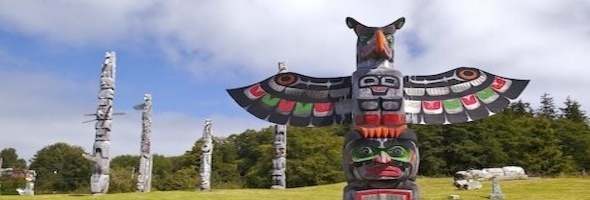
Shamanism will be a regular (as I can make it) posting comparing real world Shamanism and Shamanistic ideas to the Warcraft universe and will also point out how Shaman’s throughout the history of the Warcraft universe have been key players in many of the events that have unfolded. This will be a journey into the lore that brings us to our present class.
Shamanism has always been something that has fascinated me in real life. A shaman’s role in society was always varied and always important. They operated as Mediators, Healers, Leaders, Diviners, Warders of Spirits, agents of fertility among many other roles. We covered Shamanism in real life a little bit in the last post. I’ll recap them real quick.
From Wikipedia:
- Spirits exist and they play important roles both in individual lives and in human society.
- The shaman can communicate with the spirit world.
- Spirits can be good or evil.
- The shaman can treat sickness caused by evil spirits.
- The shaman can employ trance inducing techniques to incite visionary ecstasy and go on “vision quests”.
- The shaman’s spirit can leave the body to enter the supernatural world to search for answers.
- The shaman evokes animal images as spirit guides, omens, and message-bearers.
- The shaman can tell the future, scry, throw bones/runes, and perform other varied forms of divination
Shamanism is based on the premise that the visible world is pervaded by invisible forces or spirits which affect the lives of the living. In contrast to organized religions like animism or animatism which are led by priests and which all members of a society practice, shamanism requires individualized knowledge and special abilities. Shaman operate outside established religions, and, traditionally, they operate alone, although some take on an apprentice.
Well with that in mind, lets take a look at how blizzard blended this into Warcraft. Let’s first cast our gaze on the Orc race. We were introduced to the Horde way back in the days of Orc Vs. Human or the First War. They were a slovenly bunch of blood thirsty mongrels, but before that they were a nomadic shamanistic people who worshiped their ancestors and the spirits of nature. Lets take a look at the first major Shaman we are introduced to, Ner’zhul.
Here’s an excerpt from wow wiki:
Ner’zhul was the chieftain and elder shaman of the Shadowmoon clan and one of the most popular figures in orcish society. He was admired, respected and venerated by all for his deep connection to the spirits, and was the closest thing the orcish race had to a single leader prior to the foundation of the Horde. However, deep within, Ner’zhul craved a power he did not have…
One day, Ner’zhul was contacted by the spirit of his dead mate, Rulkan (with whom he had a regular correspondence), who warned him about the menace of the draenei, who were plotting to destroy the Orcs. After several moons, she introduced him to Kil’jaeden, the “Great One”, who began to instruct him in the ways of warlock magic and the treachery of the draenei. Though Ner’zhul was elated that he was saving his people (and finally getting the power and respect he deserved), he was puzzled why the ancestors would no longer speak to him, and why the spirits grew more distant.
Ner’zhul managed to get the rest of the clans to begin attacks on draenei settlements, supposedly by order of the ancestors, but, as he saw more and more of the draenei, he gradually became puzzled; apart from his horns, clothes, and skin tone, Kil’jaeden bore an odd resemblance to the draenei and possessed a hatred of Velen unbecoming of a divine being. Seeking answers, he attempted to commune with the ancestors in Oshu’gun, the “Mountain of the Spirits.” He was horrified when the ancestors greeted him as a monster, and the real Rulkan revealed the truth: Kil’jaeden had been lying all along.
Ner’zhul’s shamanistic ways were used against him to trick him into selling his people’s souls to the Blood Lust. His connection to the spiritual world was turned against him. He used his position to unite the Orc Clans and began the foundation work for the first Horde. He believed that he was doing what was best for his people. Without him being Shamanistic, Kil’jaeden would never have had the opportunity to manipulate Ner’zhul like he did, which would have made it much more difficult for him to create the bloodthirsty army that he wished the Orcs to become.
Ner’zhul was also panged by guilt, fueled by his sense of honor and duty to his people that he had ignored for so long. Eventually he decided to rebel against Kil’jaeden, and as a result was stripped of his Warlock powers. When he discovered the plans of the Shadow Council to make the Orc people drink the Blood of Mannoroth, his honor and duty bade him to attempt to save his people, but only one Chieftain would listen, Durotan of the Frostwolf Clan. Ner’zhul’s warning was one of many factors that lead the Chieftan to speak out against the corruption of the warlocks and attempt to bring the Orc people back to their Shamanistic roots. The actions of this leader caused him and his family to be assassinated. The only survivor was his son, who grew to be the figure known as Thrall. One Shaman set so much in motion that affected so much of the Warcraft universe.
Today’s is a brief post, but there will be more to come next time.
Till next time, happy healing!
~Lodur
This is a really neat idea for a post series. I’m looking forward to see what other info you have comparing the real life version of shaman to the wow version.
Avernas last blog post..Leveling a Boomkin